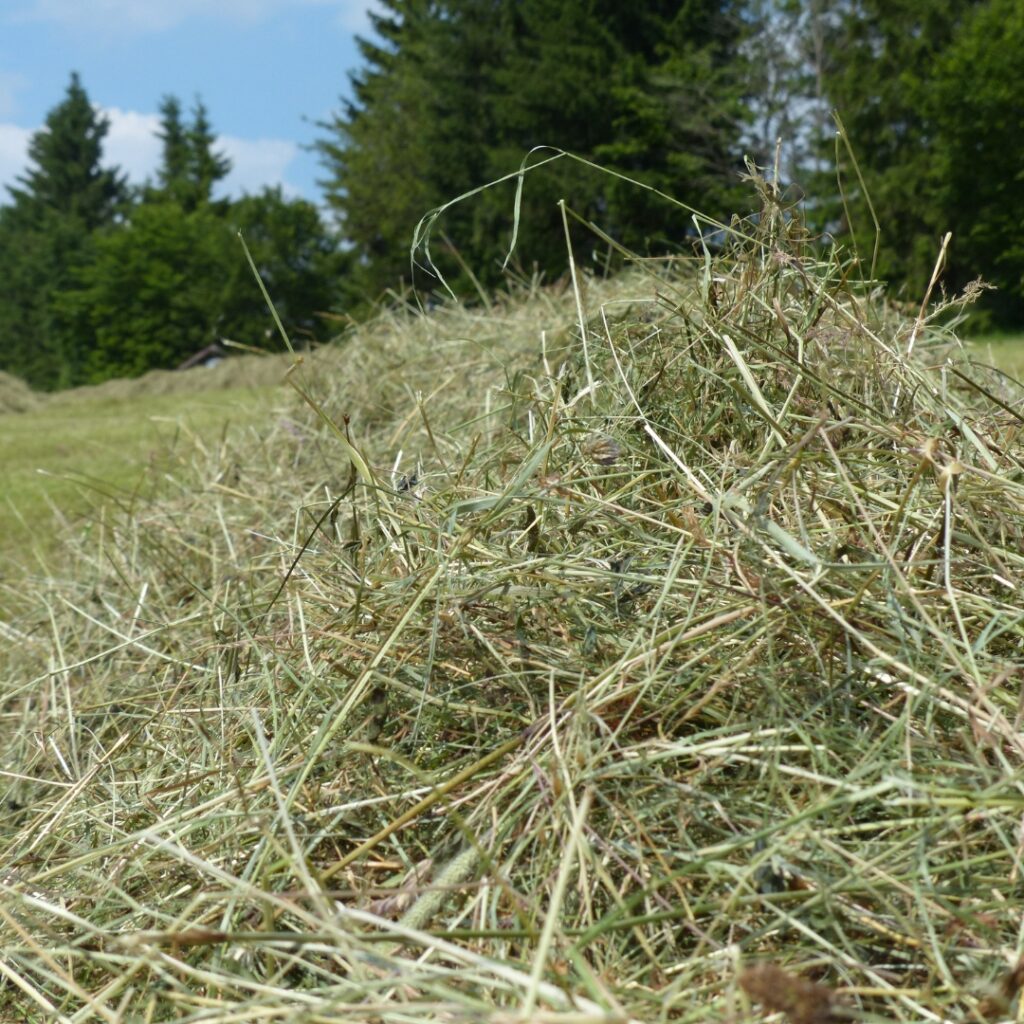
Is second cut hay always too rich ponies and maintenance horses?
This is a commonly used rule by many horse owners when trying to choose a forage to buy, and there is some truth to the rule, but it isn’t always true. There are many factors that play a large role in the nutritional value of the hay. The more mature the grass the lower the protein but higher the fiber (typically). Despite this, a late second cut could end up being lower protein than 1st cut depending on baling conditions and species of the grasses. Sugars are also a common concern for those with ponies or maintenance horses. The sugar levels are also highly influenced by a variety of factors and cannot be assumed based on cut number.
So, instead of cut # what factors should we be on the lookout for??
1) Maturity of the plant: in general, as a plant matures the fiber content increases and they can be lower in carbohydrates.
2) Weather Conditions: Forages cut in high temperatures when there is no drought stress tend to have lower sugars.
3) Time of day: There is more sugar present in pastures in the afternoon vs. the morning. Therefore, if you want low sugar hay it should be cut in the morning, but if you want to increase dry matter intake as much as possible having afternoon cut hay may be more ideal for that situation.
4) Time spent drying: The longer the hay is left to dry prior to baling, the lower the sugars tend to be. Unfortunately, you also have other nutrient losses.
5) Plant Species: There are some guidelines estimating sugar content of various forage species, but research consistently points to growing conditions having a larger impact on the sugar content than the genetics of the plant.
In conclusion, judging hay based on cut # is inadequate. When looking for low sugar hay for your maintenance or when looking for hay to maximize dry matter intake for your performance horse the best thing to do is test it!!! With hay testing you know the level of sugar, protein, digestibility parameters and much more. With this information we can design a nutrition program that ideally supports your horses needs.
Contact Balanced Bay today to get your hay sampled and begin the process of getting your horse on a balanced diet!
References:
Lawrence, L. (2006). Trends in Horse Hay. In Proceedings, 2006 Western Alfalfa & Forage Conference. UC Cooperative Extension, Agronomy Research and Extension Center, Plant Sciences Department, University of California, Davis. Available from http://alfalfa. ucdavis. edu/+ symposium/proceedings/2006/06-41. pdf.
MacKay, L. C., Mayland, H. F., & MacKay, W. P. (2003). Horse preference for alfalfa-grass hay harvested in the afternoon or morning.
Undersander, D. (2013). Grass Varieties for Horses. Journal of Equine Veterinary Science, 33(5), 315-320.
Watts, K. A., & Chatterton, N. J. (2004). A review of factors affecting carbohydrate levels in forage. J. Equine Vet. Sci, 24(2), 84-87